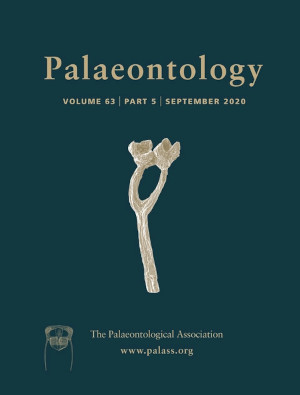Reg. Charity No. 1168330

The tetraradial or pentaradial fossil embryos and related hatched individuals from the early Cambrian Kuanchuanpu Formation are of great interest for understanding the early evolution of medusozoans. The phylogenetic and evolutionary significance of their external and internal characters (e.g. manubrium, tentacles, septa and claustra) is still controversial. Here we describe a new pentamerous medusozoan, Hanagyroia orientalis gen. et sp. nov., characterized by five well‐developed perradial oral lips around a remarkably large manubrium, a conspicuous equatorial groove, and five short interradial pairs of extensile tentacles at the bell margin. Internally, five broad and stout interradial septa join horizontally to form the claustra. Hanagyroia orientalis lacks the frenula, apertural lappet and velarium seen in coeval microfossils and extant cubozoans. Although H. orientalis resembles extant coronate scyphozoans in its round medusa‐like bell margin and equatorial groove, cladistic analysis suggests close affinity with cubozoans. Hanagyroia may represent an intermediate morphological type between scyphozoans and cubozoans. The well‐developed oral lips and paired short strong tentacles of Hanagyroia suggest direct development.